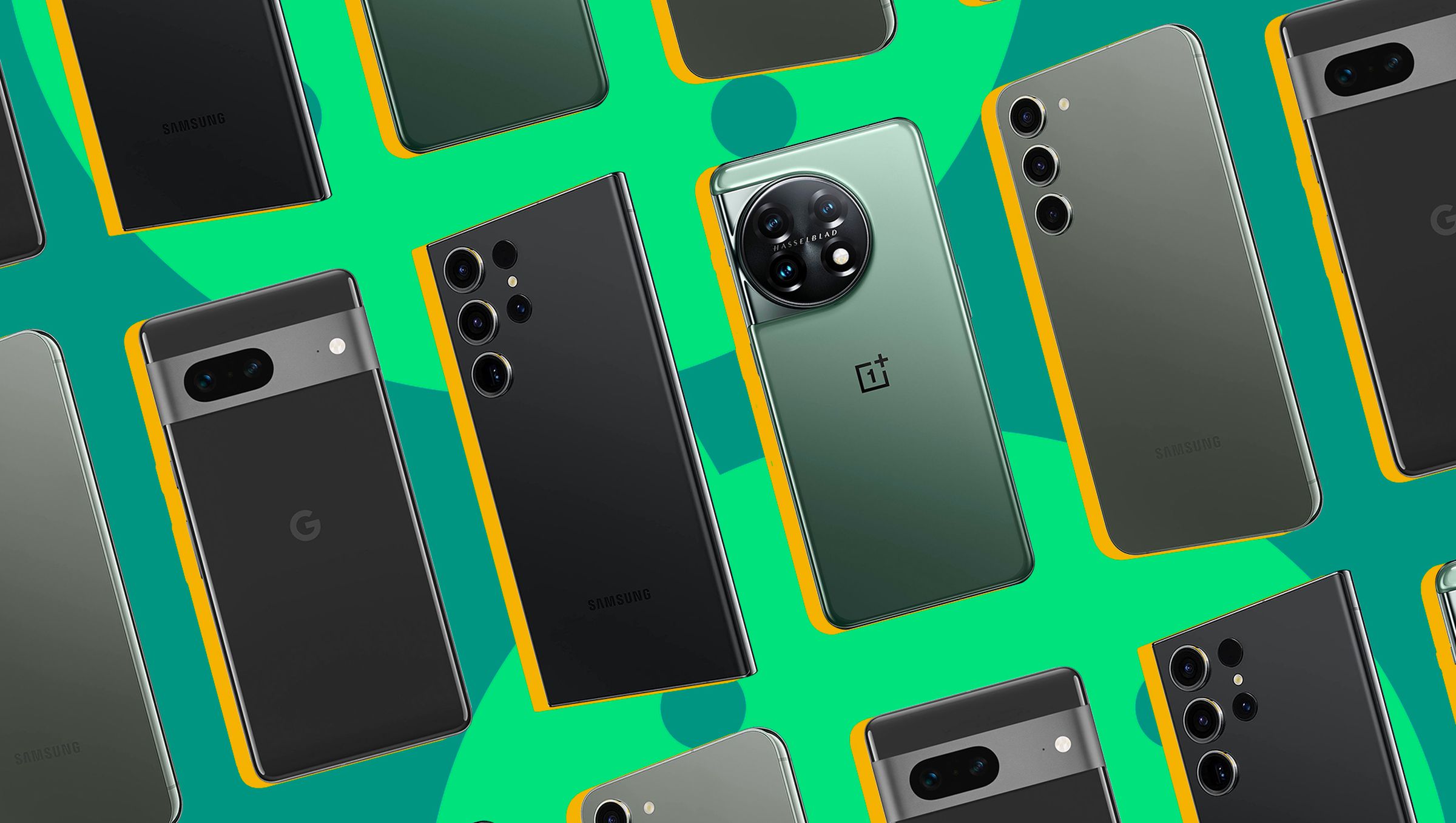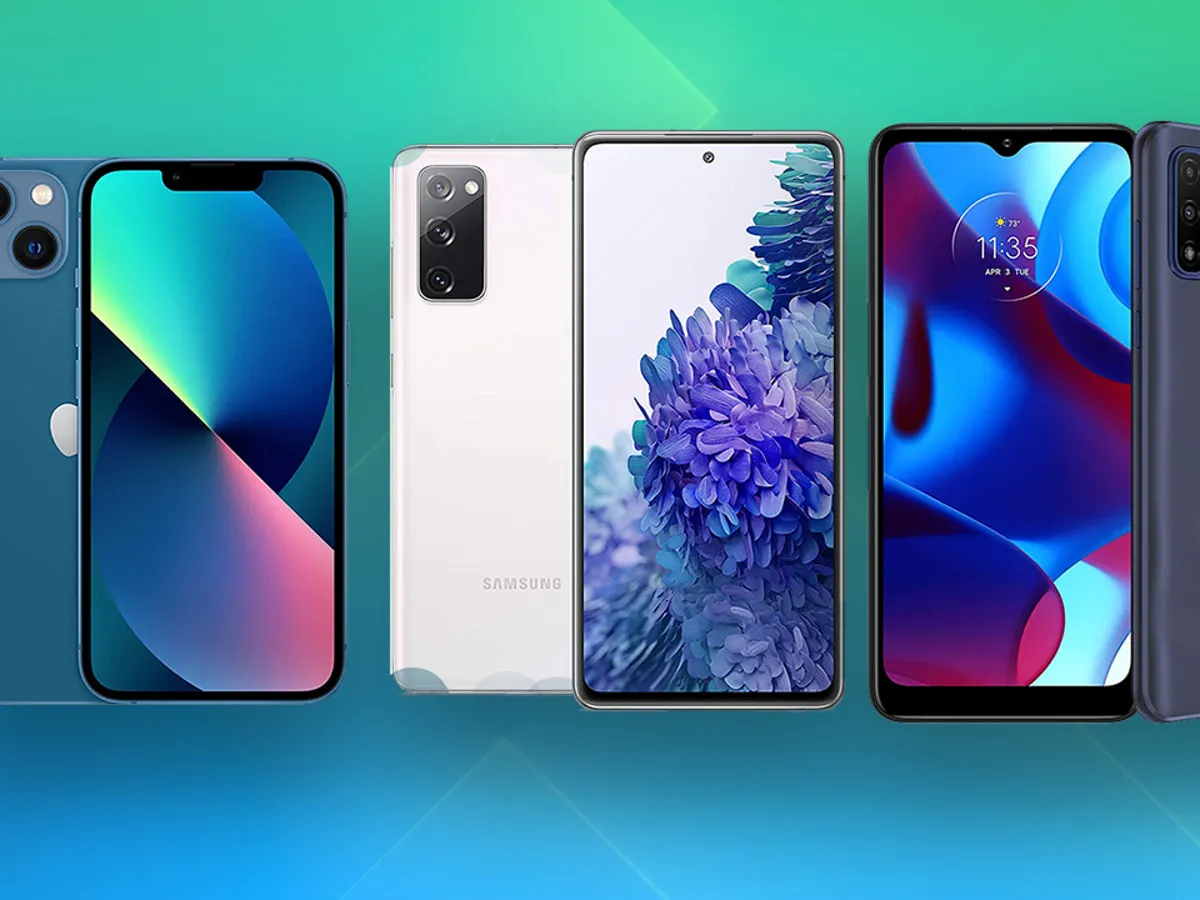Introduction
In the fast-paced world of mobile technology, the display has emerged as a pivotal aspect of user experience. The evolution of smartphone displays has been nothing short of remarkable, with manufacturers constantly striving to push the boundaries of innovation. One such breakthrough is the introduction of the 90Hz display, a feature that has garnered widespread attention and acclaim.
The 90Hz display represents a significant leap forward in display technology, offering users a smoother and more responsive visual experience. As the name suggests, this feature boasts a refresh rate of 90 times per second, surpassing the standard 60Hz displays commonly found in most smartphones. This heightened refresh rate translates to enhanced fluidity and responsiveness, making interactions with the device notably more seamless and immersive.
The advent of the 90Hz display has sparked a new wave of excitement among tech enthusiasts and casual users alike. Its impact extends beyond mere numbers and specifications, as it fundamentally transforms the way users engage with their devices. From scrolling through web pages and social media feeds to playing graphically intensive games, the 90Hz display elevates every interaction to a new level of fluidity and visual delight.
As the demand for enhanced display performance continues to surge, leading smartphone manufacturers have embraced the 90Hz display as a cornerstone of their flagship offerings. Among these trailblazers is the Google Pixel 4 XL, a device that has garnered widespread acclaim for its cutting-edge display technology. The integration of the 90Hz display into the Google Pixel 4 XL represents a bold step towards redefining the standard for visual excellence in the realm of mobile devices.
In the following sections, we will delve deeper into the intricacies of the 90Hz display, exploring its benefits, the specific advantages it brings to the Google Pixel 4 XL, and how it stacks up against other displays in the market. By unraveling the impressive capabilities of the 90Hz display, we aim to provide a comprehensive understanding of its significance in shaping the future of mobile device technology.
What is a 90Hz Display?
A 90Hz display, also known as a 90Hz refresh rate display, represents a groundbreaking advancement in smartphone display technology. The term "90Hz" refers to the refresh rate of the display, indicating that the screen refreshes 90 times per second. This is a substantial improvement over the standard 60Hz displays commonly found in most smartphones.
The refresh rate of a display is a measure of how many times per second the screen updates with new images. A higher refresh rate results in smoother motion and enhanced visual fluidity. In the context of a 90Hz display, the heightened refresh rate translates to a more responsive and seamless user experience.
The significance of the 90Hz display becomes particularly evident during interactions with the device, such as scrolling through content, navigating user interfaces, and engaging in gaming experiences. The increased refresh rate contributes to reduced motion blur and a heightened sense of immediacy, making every interaction with the device feel notably more fluid and immersive.
Furthermore, the 90Hz display has garnered attention for its ability to deliver a heightened level of visual clarity and smoothness, especially when viewing dynamic content such as videos and animations. This feature has resonated with users who prioritize a visually captivating and responsive display in their smartphones.
The introduction of the 90Hz display has redefined the expectations for display performance in smartphones, setting a new standard for visual excellence. As users increasingly demand a more engaging and seamless experience from their devices, the 90Hz display has emerged as a pivotal feature that addresses these evolving needs.
In essence, the 90Hz display represents a significant leap forward in display technology, offering users a more immersive, responsive, and visually stunning experience. Its impact extends beyond mere technical specifications, as it fundamentally transforms the way users interact with and perceive their smartphones. As the adoption of 90Hz displays continues to gain momentum across the smartphone industry, it is poised to shape the future of mobile device technology, setting a new benchmark for visual performance and user experience.
Benefits of a 90Hz Display
The 90Hz display offers a myriad of compelling benefits that significantly enhance the overall user experience. By elevating the visual and interactive capabilities of smartphones, this innovative display technology has garnered widespread acclaim for its transformative impact. Let's delve into the notable advantages of the 90Hz display:
1. Enhanced Fluidity and Responsiveness
The heightened refresh rate of the 90Hz display results in a remarkable increase in visual fluidity and responsiveness. Every swipe, scroll, and gesture on the screen feels noticeably smoother and more immediate, creating a heightened sense of engagement and interactivity. This enhanced fluidity contributes to a more natural and seamless user experience, making interactions with the device feel remarkably intuitive and gratifying.
2. Reduced Motion Blur
The 90Hz display effectively mitigates motion blur, especially during fast-paced interactions such as scrolling through content or playing games. The higher refresh rate ensures that visual elements remain sharp and clear, even during rapid movements on the screen. This reduction in motion blur enhances the overall visual clarity and cohesiveness of the display, resulting in a more visually pleasing and immersive experience for users.
3. Improved Gaming Experience
For gaming enthusiasts, the 90Hz display delivers a significant advantage by providing smoother and more responsive gameplay. The heightened refresh rate contributes to reduced input lag and a heightened sense of immediacy, allowing for a more immersive and enjoyable gaming experience. Gamers can appreciate enhanced visual fluidity and responsiveness, which can be particularly advantageous in fast-paced and graphically intensive games.
4. Visually Captivating Content Consumption
When viewing dynamic content such as videos, animations, and graphics, the 90Hz display elevates the visual experience to a new level of smoothness and clarity. The increased refresh rate ensures that moving visuals appear exceptionally crisp and fluid, enhancing the overall viewing experience. This benefit is particularly appealing to users who prioritize a visually captivating and immersive content consumption experience on their smartphones.
5. Future-Proofing Technology
As the demand for enhanced display performance continues to evolve, the 90Hz display represents a forward-looking investment in technology. By embracing this innovative display technology, users can future-proof their devices, ensuring that they are equipped to handle the increasingly sophisticated visual demands of future applications and content. The 90Hz display sets a new standard for visual excellence, positioning users at the forefront of display technology innovation.
In summary, the 90Hz display offers a compelling array of benefits, ranging from enhanced visual fluidity and responsiveness to an improved gaming experience and visually captivating content consumption. By embracing this innovative display technology, users can elevate their smartphone interactions to a new level of immersion and engagement, setting a new benchmark for visual excellence in the realm of mobile devices.
Google Pixel 4 XL's 90Hz Display
The Google Pixel 4 XL stands out as a flagship device that has made significant strides in redefining the standard for visual excellence in the realm of smartphones. One of its most prominent features is the integration of a 90Hz display, a technological marvel that elevates the device's visual performance to unprecedented levels.
The 90Hz display on the Google Pixel 4 XL represents a pivotal advancement in display technology, offering users an unparalleled level of visual fluidity and responsiveness. With a refresh rate of 90 times per second, this display ensures that every interaction with the device feels remarkably smooth and immediate. Whether it's scrolling through content, navigating user interfaces, or engaging in gaming experiences, the 90Hz display enhances the overall user experience by providing a heightened sense of engagement and interactivity.
Furthermore, the Google Pixel 4 XL's 90Hz display effectively mitigates motion blur, resulting in sharper and clearer visuals, even during rapid movements on the screen. This reduction in motion blur contributes to a more visually pleasing and immersive experience, setting a new benchmark for display clarity and cohesiveness.
For gaming enthusiasts, the 90Hz display on the Google Pixel 4 XL delivers a game-changing advantage by providing smoother and more responsive gameplay. The heightened refresh rate ensures reduced input lag and a heightened sense of immediacy, enhancing the overall gaming experience. Gamers can revel in the enhanced visual fluidity and responsiveness, particularly in fast-paced and graphically intensive games, setting the stage for an unparalleled gaming experience.
When it comes to consuming dynamic content, such as videos, animations, and graphics, the Google Pixel 4 XL's 90Hz display offers an exceptional visual treat. The increased refresh rate ensures that moving visuals appear exceptionally crisp and fluid, elevating the overall content consumption experience to new heights of smoothness and clarity. This feature resonates with users who prioritize a visually captivating and immersive content consumption experience on their smartphones.
In essence, the integration of the 90Hz display into the Google Pixel 4 XL represents a bold step towards redefining the standard for visual excellence in smartphones. By harnessing the transformative capabilities of the 90Hz display, the Google Pixel 4 XL sets itself apart as a device that prioritizes a seamless and immersive user experience, setting a new benchmark for display technology innovation in the mobile device landscape.
Comparison with Other Displays
When comparing the 90Hz display of the Google Pixel 4 XL with other displays in the smartphone market, it becomes evident that the higher refresh rate offers a distinct advantage in terms of visual fluidity and responsiveness. Traditional smartphone displays, often featuring a 60Hz refresh rate, provide a standard level of performance that has been widely accepted in the industry. However, the introduction of the 90Hz display represents a significant leap forward, setting a new benchmark for display technology.
In contrast to 60Hz displays, the 90Hz display delivers a noticeably smoother and more immediate user experience. Interactions such as scrolling through content, navigating user interfaces, and engaging in gaming experiences feel remarkably fluid and responsive on the Google Pixel 4 XL. This heightened level of visual fluidity sets the device apart, offering users a more engaging and seamless interaction with their smartphones.
Furthermore, the reduction in motion blur achieved by the 90Hz display sets it apart from traditional displays. Rapid movements on the screen remain sharp and clear, enhancing the overall visual clarity and cohesiveness of the display. This advantage becomes particularly pronounced when compared to 60Hz displays, where motion blur can impact the visual experience, especially during fast-paced interactions.
In the realm of gaming, the 90Hz display presents a compelling edge over standard displays. The smoother and more responsive gameplay offered by the 90Hz refresh rate enhances the overall gaming experience, providing reduced input lag and a heightened sense of immediacy. This advantage becomes increasingly significant in graphically intensive games, where the enhanced visual fluidity contributes to a more immersive and enjoyable gaming experience.
When it comes to consuming dynamic content, such as videos and animations, the 90Hz display excels in delivering a visually captivating experience. Moving visuals appear exceptionally crisp and fluid, elevating the overall content consumption experience to new levels of smoothness and clarity. This stands in contrast to traditional displays, where the visual fluidity may not reach the same level of excellence offered by the 90Hz display.
In summary, the comparison between the 90Hz display of the Google Pixel 4 XL and other displays in the smartphone market underscores the transformative impact of the higher refresh rate. The 90Hz display sets a new standard for visual excellence, offering enhanced fluidity, reduced motion blur, and an improved gaming and content consumption experience. As smartphone technology continues to evolve, the 90Hz display emerges as a pivotal feature that redefines the expectations for display performance, setting a new benchmark for visual excellence in the mobile device landscape.
Conclusion
In conclusion, the 90Hz display represents a monumental leap forward in smartphone display technology, offering users a transformative visual experience characterized by enhanced fluidity, reduced motion blur, and heightened responsiveness. As showcased by the Google Pixel 4 XL, the integration of the 90Hz display sets a new standard for visual excellence in the realm of smartphones, redefining the expectations for display performance and user interaction.
The benefits of the 90Hz display extend beyond technical specifications, fundamentally reshaping the way users engage with their devices. From seamless scrolling and navigation to immersive gaming and visually captivating content consumption, the 90Hz display elevates every interaction to a new level of smoothness and clarity. This heightened level of visual performance not only enhances user satisfaction but also future-proofs devices, ensuring they are equipped to handle the increasingly sophisticated visual demands of future applications and content.
When compared to traditional displays featuring a 60Hz refresh rate, the 90Hz display offers a distinct advantage, delivering a noticeably smoother and more immediate user experience. The reduction in motion blur and the enhanced gaming and content consumption experience further underscore the transformative impact of the 90Hz display, setting it apart as a pivotal feature that redefines the expectations for display performance in the smartphone market.
As the demand for enhanced display performance continues to surge, the 90Hz display has emerged as a cornerstone of flagship smartphone offerings, captivating users with its unparalleled visual fluidity and responsiveness. The Google Pixel 4 XL stands as a testament to the potential of the 90Hz display, showcasing its ability to elevate the overall user experience and set a new benchmark for display technology innovation.
In essence, the 90Hz display represents a forward-looking investment in technology, positioning users at the forefront of display innovation and setting a new standard for visual excellence in the mobile device landscape. As smartphone technology continues to evolve, the 90Hz display stands as a pivotal feature that redefines the expectations for display performance, shaping the future of mobile device technology and setting a new benchmark for visual excellence.
The integration of the 90Hz display into the Google Pixel 4 XL serves as a testament to the device's commitment to delivering a seamless and immersive user experience, setting it apart as a trailblazer in the realm of smartphone display technology. With its transformative capabilities, the 90Hz display has undoubtedly left an indelible mark on the smartphone industry, paving the way for a new era of visual excellence and user interaction.




















